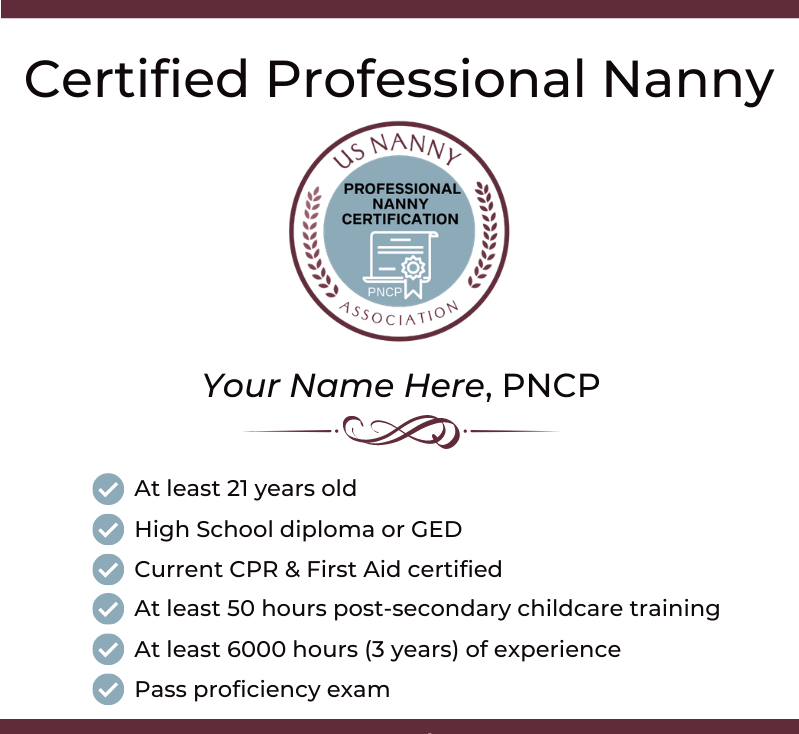Brain fitness. Is it a contradiction or a vital need this summer? It depends on whether your brain is working well, creatively, and consistently. Some take brain fitness for granted until something happens, or they notice a change in their behavior or creative energy. Listen up, nannies. This could happen to you.
It happened to me on a recent consulting trip from my warm Southern community to upstate New York. I had been pushing my physical and mental limits for weeks. I felt exhausted, and it began to show. One morning, I missed a plane connection, lost a new detective story I was eager to read, and got a speeding ticket from a very nice but strict NY state trooper. All this happened because I took my brain fitness for granted. Without the four “F’s”—fun, focus, feeding, and freshness—my system began to fail, and I paid the price.
Losing that best-selling book or getting the speeding ticket made me pay attention. I had just accepted the assignment to write about brain fitness research. My dilemma helped me understand the topic better. After reviewing the research and talking to experts and colleagues, I propose four findings that can help us keep our brains fit, healthy, happy, and working well, especially in high-stress jobs like being a nanny. By following the “Four F’s of Fitness,” we can improve our stress levels, brain health, and maybe even our driving records!
Defining the Four F’s
Many current ideas about “brain fitness” focus on trendy tech gadgets or computer games. These can help exercise our thinking and engage our brains. More traditional strategies, like playing Tetris on your phone while waiting at the dentist, doing a daily crossword or Sudoku puzzle, completing a jigsaw puzzle, or using your hands to paint, draw, or play music, also contribute to brain fitness. These will be part of the “10 Brain Fitness” activities at the end of this article.
However, this discussion looks at the background knowledge that research suggests as the key to strength, stamina, and sustained brain fitness.
1. Fun: Adding novelty, new experiences, social connections, hands-on activities, humor, and healthy “white space” to recharge cognitive batteries.
2. Focus: Using strategies like checking sources, setting reminders on your phone, allowing time between tasks, making copies of essential documents, using colored markers or stickers to prompt memory, and setting reminders for tasks.
3. Feeding: Eating brain-friendly foods and staying hydrated during high-demand and stressful times to keep neural transmissions smooth and blood sugar stable.
4. Freshness: Getting enough rest, including deep, restorative sleep, daily physical activity, at least 15 minutes of sunlight, and quiet meditation or reflection.
How Does Brain Fitness Work?
Our three-pound brains can make “32 million years of neural connections” in the pre-frontal cortex. Yet, even with this complexity, our brains can fail if not kept fit. Four threats to brain fitness are:
1. Boredom
2. Cognitive Dissonance
3. Poor Nutrition
4. Stress and Fatigue
Signs of Each Threat
– Boredom: Feeling old, not planning for fun, anxiety.
– Cognitive Dissonance: Losing things, losing touch, losing focus.
– Poor Nutrition Weight gain, bloating, inflammation.
– Stress and Fatigue: Inflammation, headaches, short temper, forgetfulness.
These threats trigger the stress hormone “cortisol,” which can harm overall health and relationships. The treatment plan involves the 4 F’s.
*Note: To learn more about the research behind the Four F’s, read *Differentiated Pathways of the Brain* or *Brain Tips,* both available from Lorenz Educational Press.
Lifestyle and Brain Fitness
Brain fitness, unlike some physical fitness, doesn’t need a personal trainer, Pilates reformer, jogging track, mountain bike, or swimming pool. It requires patterns of behavior, habits, and lifestyle adjustments. The Four F’s—Fun, Focus, Feeding, and Freshness—optimize brain fitness when they become part of daily schedules, travel plans, work and family dynamics, and friendships. Let’s look at some situations where brain fitness might be maximized or minimized by the choices we make.
Scenario 1: Carol wants to help her nanny family, headed by a single mother, by taking on more hours to care for her school-age children every afternoon. This means she must give up her Prayer-Walking group and the nap she relies on. She starts eating more fast food because she grabs a hamburger while taking the kids to soccer and dance lessons. She gains 5 pounds, begins snapping at the kids, loses small items, and locks her car keys in the car at the soccer field. Diagnosis: Loss of fun, freshness, and feeding.
Solution: Carol and her nanny family should create a mutually beneficial schedule. The kids might stay late with Carol only on Tuesdays and Thursdays when they have soccer practice and lessons, and go to an after-school program funded by the school on other days. Carol might use a crockpot to prepare healthy meals for these evenings. This would allow her to join her walking group a few afternoons each week or ask other parents and caregivers to walk together during soccer practice. Prescription: Compromise and Planning.
Scenario 2: Daniella’s mother recently passed away after a long illness during which Daniella was the primary caregiver, in addition to her nanny work. She feels tired, forgetful, and listless. Disinterested in food, Daniella loses 5 pounds and begins having insomnia, something new for her. Daniella’s family encourages her to take some time off. Diagnosis: Lack of focus, freshness, fun, and feeding.
Solution: Daniella might work part-time for a few weeks. She needs to use her brain in familiar and new ways while getting necessary rest. Adding a volunteer opportunity to her life during this break might help. Altruism is linked to healthier brains and social connections. Starting a fitness routine, such as adopting a dog from a shelter, could help her sleep better and stimulate her appetite. Prescription: Balance of work and play. Stimulation with a mission.
Ten Strategies to Stimulate Brain Fitness
As summer begins, here are a few strategies to incorporate the critical “Four F’s” into a nanny’s day.
1. Rent a foreign film on DVD and watch it with English subtitles to build novelty and fun. Eat fresh frozen red grapes for an antioxidant brain feed.
2. Invite friends to walk through a local farmer’s market and buy local produce to make roasted vegetable sandwiches. The stroll, sights, and meal address freshness, feeding, and focus. Choose the darkest color vegetables and roast with garlic and olive oil. Pull your treasures in a red wagon for playful child-like fun.
3. Volunteer to tutor at a local after-school program and introduce the kids to brain games such as crossword puzzles or Sudoku. Altruism keeps the brain fit with focus. Bring small prizes like peppermints, cinnamon, or dark chocolate pieces—all mood foods.
4. Pet therapy boosts mood and increases restful sleep. Walking a rescued pet can help increase appetite and promote restful sleep. Taking a pet to a dog park or walking trail offers interaction with others who love animals.Fun, Feeding, Focus, and Freshness for the brain.
5. Create a brain-friendly palette in your home’s sleeping, eating, and entertaining areas. Place sunny yellow lemons in a blue dish. Arrange cut mums or sunflowers in a jar. Simmer cinnamon in a scent pot. The limbic system will register these sensory experiences as Fresh and Fun.
6. Dip an ounce of good quality (60% or more) dark chocolate into a cup of coffee while playing a vocabulary game like [Freerice](http://www.freerice.com) on your laptop. Feeding and Focus accomplished in one delicious moment. This website enhances verbal skills and donates grains of rice to the UN Food Bank, an altruistic act the brain also enjoys.
7. Sprinkle sheets with a lavender scent to promote sleep. Turn computers, lamps, and digital clocks away from the pillow to prevent light from interfering with deep sleep. Freshness is brain fitness.
8. Send a handwritten note to a friend or colleague who has done something kind or needs attention. Include a description of how they’ve impacted your life. Writing details enhances Focus. Use a purple fine-tip pen for added Fun.
9. Organize a recipe file, tools, or even shoes into a new grouping using colors, tags, and labels. Donate items you no longer use. Focus and Fitness combine to make this task worthwhile.
10. Tune into [Pandora](http://www.pandora.com) and listen to a different style of music or find an artist you once admired. What memories and feelings do the songs evoke? Focus, Freshness, and Fun combine, and Feeding joins in with a brain fitness snack of walnuts and dried cranberries.
Brain fitness, pardon the pun, is really a state of mind. It involves making fun, focus, freshness, and feeding a part of every day in as many experiences as possible. Challenging yourself to make brain-healthy choices can enhance cognitive and emotional strengths and bolster weak areas. Research suggests that creativity, happiness, and thinking can be stronger and more sustained through careful application of fun, focus, freshness, and feeding. It makes sense. Why settle for frustrating setbacks when life could be more peaceful and satisfying? I’m sipping my blueberry smoothie now and heading for bed with a lavender eye patch. Who knows what tomorrow may bring? I want to be prepared!
Dr. Linda Karges-Bone is a professor, author, and media influencer who has written 34 books and hundreds of articles and stories for educational and family media. You can reach her at educationinsite.com

We want to thank all the nannies, advocates and business leaders who provide practical tips and insight to elevate our industry. Thank you for sharing your expertise.
The US Nanny Association issues the highest certification requirements in our industry as they require training, work experience, passing an industry exam, a background check and current CPR and First Aid:
- Certified Nanny
- Certified Newborn and Infant Professional
- Certified Professional Nanny
